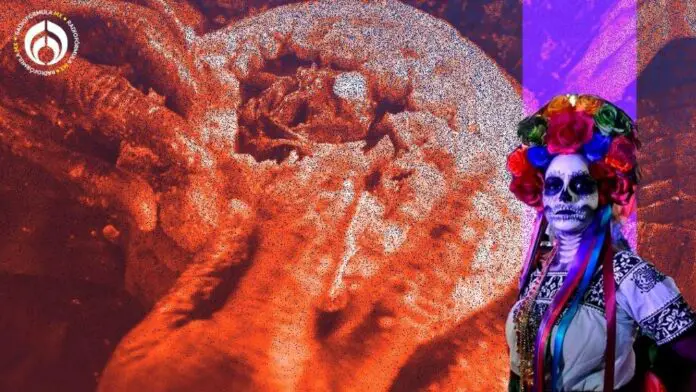This dish is cooked in an underground oven called a pib, which has Mayan origins.
On the Day of the Dead in Campeche and Yucatán, a very special dish known as pibipollo is prepared, which is traditionally accompanied by atole or chocolate.
What is Pibipollo?
Pibipollo is a dish similar to a tamale or bread, made with chicken and corn dough, and wrapped in a mold lined with banana leaves, as explained by the Encyclopedic Dictionary of Mexican Gastronomy.
According to this book, the chicken in this delicacy is cooked with a seasoning paste made of achiote, black pepper, garlic, epazote, tomato, and habanero chili.
This ‘little tamale’ is cooked in the pib; that is, an oven built underground, similar to the one used to cook barbacoa, which has Mayan origins.
“The mold is placed in an underground oven called a pib and covered with embers; finally, the hole is sealed to cook the tamale and then unearthed to eat it,” details the Encyclopedic Dictionary.
Landy Matos, a resident of Campeche who, along with her family, maintains the tradition of making pibipollo, mentions that burying the food “signifies death and resurrection,” which is why it is prepared to commemorate the Day of the Dead.
Additionally, the Mayan priest Edgar Peraza Chan revealed that the original name of the dish is ‘pib xcaax’: pib means “made in an oven” and xcaax, “chicken.”
Pibipollo is also known as muc bil pollo, a term derived from the Mayan ‘mukbil,’ which means ‘buried’ or ‘something that must be buried.’
What Are the Customs and Traditions of the Day of the Dead?
Every year, on the Day of the Dead, many Mexican families set up offerings and altars decorated with marigold flowers, papel picado, sugar skulls, pan de muerto, mole, or some dish that their deceased relatives liked, to whom the offering is dedicated. Just like in pre-Hispanic times, incense is also used to scent the place.
Source: Radio Formula






